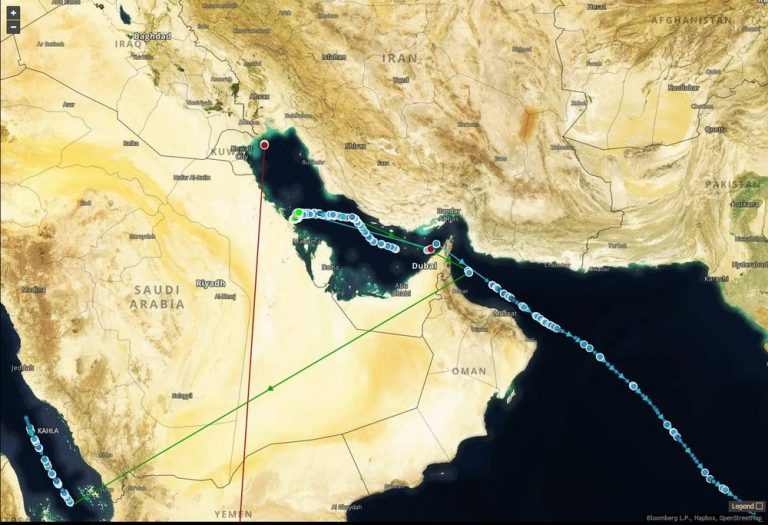Paris: EU members have so far been unable to reach a consensus on a candidate to succeed Christine Lagarde as head of the International Monetary Fund and may yet need a vote to break the deadlock, officials said Thursday.
EU states had given themselves a deadline of the end of July to find a candidate to head the Washington-based global lender, which by tradition — but not rule — is led by a European.
But reflecting tensions all too familiar in Brussels, the process to replace Lagarde, who is to become head of the European Central Bank, has been mired in disputes between northern and southern EU member states.
“At this stage, although some candidates´ names gather more support than others, there is not yet a full consensus around one name,” said an official from France´s finance ministry, asking not to be identified by name.
French Finance Minister Bruno Le Maire, who is leading the talks on finding a European candidate, has spoken to “all his colleagues” over the last few days and in particular his German counterpart Olaf Scholz.
Sources say that five candidates are currently in contention — from southern Europe Spain´s Finance Minister Nadia Calvino and her Portuguese counterpart Mario Centeno, and from northern Europe, former Dutch finance minister Jeroen Dijsselbloem and Bank of Finland chief Olli Rehn.
The fifth candidate — from central Europe and a possible compromise figure — is Kristalina Georgieva, the current number two at the World Bank.
Southern EU states fear that Rehn and Dijsselbloem, who enjoys German backing, excessively favour economic austerity which risks harming growth.
Southern countries have particularly long memories of Dijsselbloem because of his tough stance against southern nations like Greece when he headed the group of EU finance ministers.
“I can´t spend all my money on drinks and women and then ask for help,” he said in one particularly notorious comment in 2017. But northern countries are also underwhelmed with the southern European candidates, with Calvino in particular seen as having insufficient experience.
“This situation shows the splits between the north and the south and the difficulties for the Europeans in agreeing on a solid candidate,” a source close to the talks told AFP.
The ECB´s outgoing chief Mario Draghi said last week that he was “not available” for the position. At 71, he is too old to hold the post, according to IMF rules, which state that the managing director must be under 65 when appointed.
This leaves Georgieva — but the snag is that she will soon be 66, above the age limit of 65. “The other members of the fund will need to make an exception for her, and that it is not a given,” one source said.
Adding to the uncertainty, Le Maire has allowed Britain, after its government shake-up last month, one more day to present a candidate, source said. This could allow a candidacy by Canadian-born Bank of England governor Mark Carney, who holds Canadian, British and Irish nationality.
Sources said a vote by ministers is a possible way to break the impasse, adding that Le Maire has raised this as an option. But this would also have the disadvantage of exposing to the world the inability of Europeans to unite around a single top-level candidate, the sources said.
The IMF says any of the fund´s 189 members can nominate a candidate between July 29 and September 6, after which the board will announce its shortlist of up to three names. But with the US and Europe having the biggest voting blocs in the IMF, it would be difficult for an outside candidate to upset the tradition whereby they divvy up the IMF and World Bank jobs between them.
The convention has nonetheless come under strain in recent years, with developing economies demanding a greater say at the Washington-based institutions. US Treasury Secretary Steven Mnuchin emphasised at a meeting of G7 ministers last month that naming a European to head the IMF was a convention, “not an official policy”.
Possible non-European candidates could include the general manager of the Bank of International Settlements and former Bank of Mexico governor Agustin Carstens, and Lesetja Kganyago, the governor of the central bank of South Africa. The IMF plans to select its new leader by October 4.










LONDON – The United Kingdom is now legally committed to reduce net greenhouse-gas emissions to zero by 2050. Opponents in Parliament argued for more cost-benefit analysis before making such a commitment; and Nobel laureate economist William Nordhaus argues that such analysis shows a much slower optimal pace of reduction.
The 2015 Paris climate agreement seeks to limit global warming to “well below 2°C” above preindustrial levels, while the Intergovernmental Panel on Climate Change recommended in 2018 that the increase be capped at 1.5°C. By contrast, Nordhaus’s model suggests limiting warming to 3.5°C by 2100. If that were the objective, net zero emissions would be acceptable far later than 2050.
But Nordhaus’s approach represents a misguided application of sophisticated modeling to decision-making under extreme uncertainty. All models depend on input assumptions, and Nordhaus’s conclusions rely crucially on assumptions about the additional harm of accepting 3.5°C rather than 2°C of global warming.
For some types of climate impact, quantitative estimates can be attempted. As the Earth warms, crop yields will increase in some colder parts of the world and decrease in hotter regions. Any estimate of the net economic impact is subject to wide margins of error, and it would be absurd to imagine that benefits in one region will be transferred to others that have been harmed, but at least modeling can help us to think through the possible scale of these effects.
But it is impossible to model many of the most important risks. Global warming will produce major changes in hydrological cycles, with both more extreme rainfall and longer more severe droughts. This will have severe adverse effects on agriculture and livelihoods in specific locations, but climate models cannot tell us in advance precisely where regional effects will be most severe. Adverse initial effects in turn could produce self-reinforcing political instability and large-scale attempted migration.
To pretend that we can model these first- and second-round effects with any precision is a delusion. Nor can empirical evidence from human history provide any useful guidance for how to cope with a world that warmed to Nordhaus’s supposedly optimal level. After all, 3.5°C warming above preindustrial levels would take us to global temperatures not seen for over two million years, long before modern human beings had evolved.
Modeled estimates of adverse impacts are also incapable of capturing the risk that global warming could be self-reinforcing, creating a nontrivial risk of catastrophic threats to human life on Earth. Recent Arctic temperature trends confirm climate model predictions that warming will be greatest at high latitudes. If this produces large-scale melting of the permafrost, huge amounts of trapped methane gas will be released, causing climate change to accelerate. The higher the temperature attained, the greater the probability of rapid and uncontrollable further warming. Models always struggle to capture such strongly endogenous and non-linear effects, but Nordhaus’s 3.5°C point of optimality could be a hugely unstable equilibrium.
Before the 2008 financial crisis many economists, including some Nobel laureates, believed that sophisticated “value at risk” (VaR) models had made the global financial system safer. Then-US Federal Reserve Chair Alan Greenspan was among them. In 2005, he reassuringly observed that the “application of more sophisticated approaches to measuring and managing risk” was one of the “key factors underpinning the greater resilience of our largest financial institutions.”
But those models provided no warning at all of impending disaster. On the contrary, they deluded bank managers, central bankers, and regulators into the dangerous belief that risks could be precisely foreseen, measured, and managed. VaR models could not capture the danger of catastrophic collapse resulting from endogenous self-reinforcing feedback loops within a complex and potentially fragile system. The same is true of supposedly sophisticated models purporting to discern the optimal level of global warming.
The economic costs of achieving carbon neutrality by mid-century are also uncertain. But we can estimate their maximum order of magnitude with far greater confidence than is possible when assessing the costs of adverse effects of climate change.
Achieving a zero-carbon economy will require a massive increase in global electricity use, from today’s 23,000 TW hours to as much as 90,000 TW hours by mid-century. Delivering this in a zero-carbon fashion will require enormous investments, but as the Energy Transitions Commission has shown, it is technically, physically, and economically feasible. Even if all those 90,000 TW hours were provided from solar resources, the total space requirement would be only 1% of Earth’s land surface area. And in real-world competitive energy auctions, solar and wind providers are already committing to deliver electricity at prices close to and sometimes below the cost of fossil fuel generation.
Total cost estimates must also account for the energy storage or backup capacity needed to cover periods when the wind doesn’t blow and the sun doesn’t shine, and for the complex challenge of decarbonizing heavy industrial sectors, such as steel, cement, and petrochemicals.
Added up across all economic sectors, however, it’s clear that the total cost of decarbonizing the global economy cannot possibly exceed 1-2% of world GDP. In fact, the actual costs will almost certainly be far lower, because most such estimates cautiously ignore the possibility of fundamental technological breakthroughs, and maintain conservative estimates of how long and how fast cost reductions in key technologies will occur. In 2010, the International Energy Agency projected a 70% fall in solar photovoltaic equipment costs by 2030. It happened by 2017.
Rather than relying on apparently sophisticated models, climate-change policy must reflect judgment amid uncertainty. Current trends threaten major but inherently unpredictable adverse impacts. Limiting global warming to well below 2°C will cost at most 1-2% of GDP, and those costs will come down if strong commitments to reduce emissions unleash technological progress and learning-curve effects. Given these realities, zero by 2050 is an economically rational target.